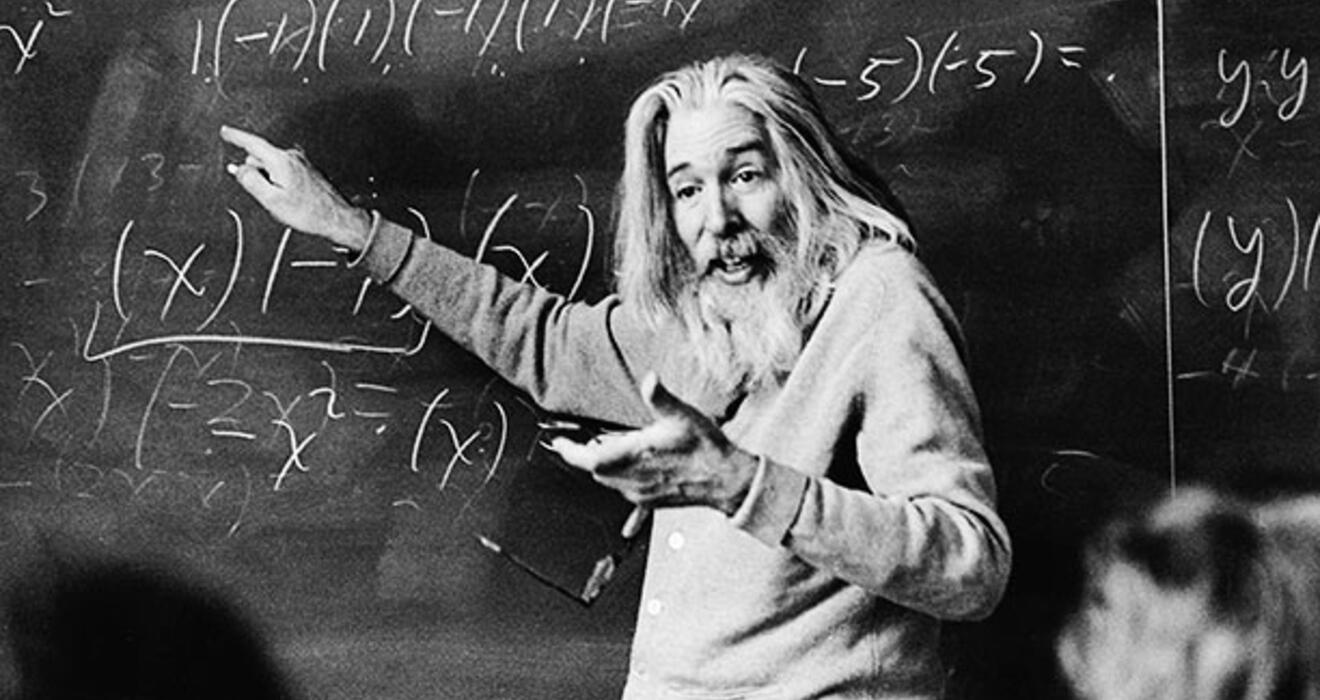
MAY 25, 1919 | FEB. 6, 2017
RAYMOND M. SMULLYAN *59, WHO DIED in February at 97, can best be described as the Willy Wonka of word problems, a gonzo logician who transformed raw math into magical literary confections. In the college classes he taught nationwide (including at Princeton), as well as in his popular puzzle books — which earned him a legion of fans and an appearance on The Tonight Show Starring Johnny Carson — Smullyan spun knotty tales that had the power to confound, enrage, delight, and edify.
Smullyan’s dozen-plus books, which include The Lady or the Tiger?, What Is the Name of This Book?, and To Mock a Mockingbird, are singular artifacts. You don’t read most of his stories so much as you maneuver your way through them, room by room, chapter by chapter, as in a video game. All fiction, of course, can be seen as a kind of game played between author and reader — but where a normal book asks the reader to take an author’s words and use them to furnish a fuller imaginative reality, Smullyan went one step further. He would sketch the barest outline of a room, then ask you to furnish it, and then challenge you to march those furnishings to and fro like chess pieces. Smullyan’s “mathematical novels,” he wrote in 2009, are “more than mere puzzle books — it is through recreational logic puzzles that I introduce the general reader to deep results in mathematics and logic!”
Deep, indeed: Smullyan’s tales ranged from supernatural twists on simple logic games (“Transylvania is inhabited by both vampires and humans; the vampires always lie and humans always tell the truth ... ”) to chapters-long detective dramas that lead the reader toward concepts like Gödel’s incompleteness theorems. Then there were his “meta-puzzles,” intentionally half-formed tales that challenged readers to provide not only the solution to a puzzle, but also to fill in those portions of the puzzle’s narrative setup that Smullyan deliberately left missing. These are puzzle stories that, through the very act of attempting to solve them, write themselves into existence. (Your move, Borges.)
True to his books, Smullyan’s own career was decidedly free from the constraints of a linear narrative. “I have lived four different lives,” he wrote in 2009, “as a mathematician, musician, magician, and author of essays and puzzle books.” (He might have also added Taoist philosopher to the list, since Smullyan’s pursuit of logic led him to a deep love for and understanding of that tradition, as chronicled in his influential book The Tao Is Silent). The through line was a fascination in the knottiness of reality: “There was a gleefulness — and maybe a certain obsessiveness” in his love of puzzles, magic, and music, says Jason Rosenhouse, an author and math professor at James Madison University.
As a young man, Smullyan planned to become a professional pianist — his first teaching appointment was at a music school — but he switched to math when tendinitis afflicted his right arm. From there, he performed magic shows to pay the bills while embarking on a highly unorthodox academic career in math. Smullyan’s résumé thenceforth reads like a twisted logic problem in its own right: “Strangely enough, before I had a college degree, or even a high school diploma, I received an appointment as a mathematics instructor at Dartmouth College on the basis of some papers I had written on mathematical logic. After teaching at Dartmouth, the University of Chicago gave me a bachelor of arts degree, based partly on courses I had never taken, but had successfully taught, such as calculus. I then went to Princeton University for my Ph.D. in mathematics in 1959.”
A long teaching and writing career followed, with Smullyan publishing new books on math, Taoism, and logic up until last year. If a man was born in Brooklyn, N.Y., in 1919, and died in Hudson, N.Y., in 2017, how many strange and fantastic worlds could he visit in between? For Smullyan, the possibilities approached infinity.
David Walter ’11 is a freelance journalist in New York.
VIDEO Raymond M. Smullyan *59
From The Tonight Show, 1982






No responses yet